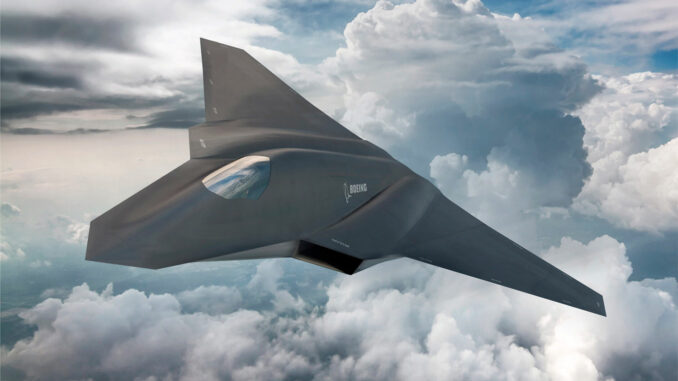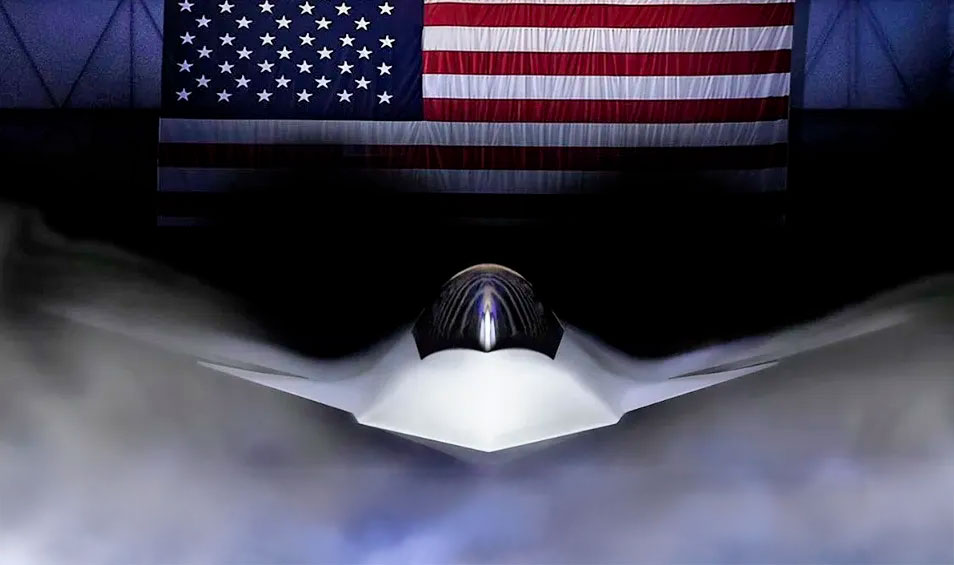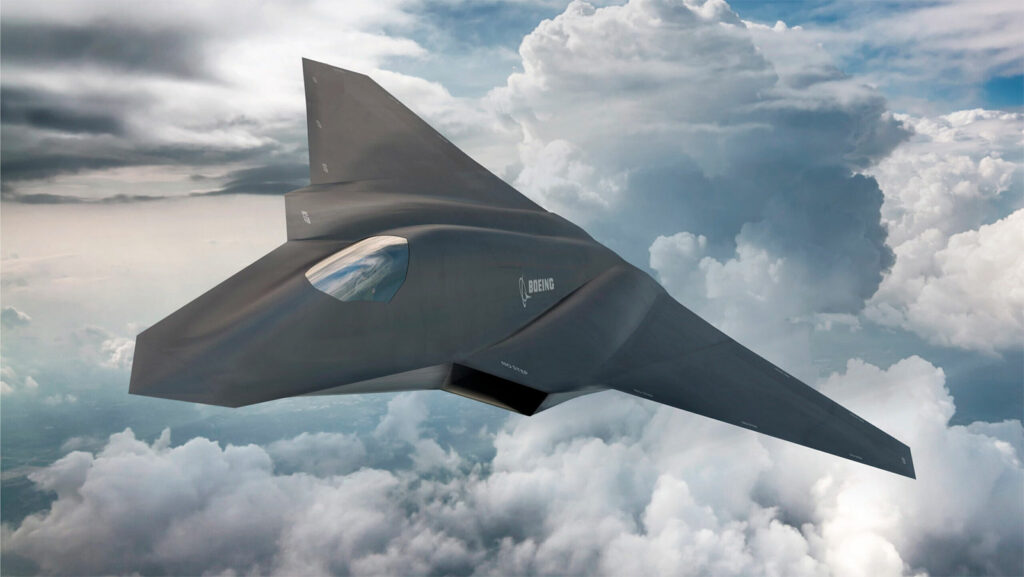
The former Secretary of the Air Force reveals the technical choices, costs and challenges of Boeing’s F-47 stealth fighter, the announced successor to the F-22.
Former US Secretary of the Air Force Frank Kendall has revealed key information about the Boeing F-47 program, the future sixth-generation stealth fighter. Launched via the Aerospace Innovation Initiative led by DARPA, this program was initially intended to compete with Lockheed Martin’s dominance with its F-22 and F-35 fighters. Two demonstrators, built by Boeing and Lockheed Martin after 2017, tested critical technologies before arriving at the current F-47 model. The cost of the F-47 is estimated at between 160 and 180 million euros per unit, with an advanced network architecture and extensive integration of CCA drones. Kendall emphasizes the strategic importance of the program despite its high cost, while stressing the need to strengthen the defense of US military bases against new threats.

Origins and context of the F-47 program
The Boeing F-47 program stems from the Aerospace Innovation Initiative (AII), launched in the mid-2010s by DARPA with an initial investment of approximately 930 million euros (1 billion dollars). This initiative also involved the US Air Force and Navy, aiming to develop a generation of experimental aircraft (“X-planes”) capable of testing technologies deemed critical for a sixth-generation fighter. These prototypes, built after 2017 by Boeing and Lockheed Martin, were intended to prove the technical viability of new stealth configurations, advanced network capabilities and a greater operational range than current aircraft.
The program sought in particular to break Lockheed Martin’s market dominance, especially after the F-22 and F-35 programs. Frank Kendall emphasizes that the objective was to re-establish healthy industrial competition, enabling the Pentagon to better control costs and performance. According to Kendall, Boeing’s choice of the F-47 was the result of real and close competition, with proposals deemed “very creative” by Andrew Hunter, former assistant secretary for technology acquisition.
Technical characteristics and costs of the F-47
The Boeing F-47 is a stealth fighter intended primarily for penetration missions in heavily defended areas, like its predecessor, the F-22 Raptor. Kendall describes the general configuration of the F-47 as a direct descendant of the F-22, but with extended network capabilities, particularly for managing a fleet of CCA (Collaborative Combat Aircraft) drones. This “quarterback” capability, piloting drones remotely for complementary missions, represents a major innovation and an adaptation to future scenarios of air warfare.
In terms of costs, Kendall reveals that each F-47 unit will cost between 148 and 167 million euros (160 to 180 million dollars), i.e. approximately twice the unit price of an F-35, currently estimated at 83 million euros (90 million dollars). The total cost of developing the NGAD (Next Generation Air Dominance) program, of which the F-47 is an essential component, will require at least 18.5 billion euros (20 billion dollars) more.
Strategic and operational consequences
The F-47 program is part of a specific strategic context: it must enable the United States to maintain its air superiority against technologically advanced adversaries, such as China. Kendall emphasizes the importance of this capability, particularly in the event of conflict in the highly defended airspace of the Western Pacific or Eastern Europe. However, the former Secretary of the Air Force makes it clear that the high cost of the F-47 involves difficult trade-offs. He emphasizes that every euro invested in this program potentially limits US capabilities to respond to other major strategic threats, such as the neutralization of satellites or the defense of military bases against Chinese and Russian hypersonic missiles.
The financial and strategic risk is therefore twofold: not investing enough in the F-47 would expose the United States to a critical loss of air superiority, while excessive investment in this one aircraft alone could neglect other vital areas. Kendall advocates a balanced approach, with parallel investment in anti-missile systems that are more affordable than the current Patriot and THAAD, in order to ensure the resilience of American military bases.

Outlook and future developments of the program
The NGAD program, of which the F-47 is a part, is designed to evolve in several stages or “increments”. Andrew Hunter explains that the F-47 is only the first version of a family of adaptable and evolutionary stealth aircraft. This modularity is made possible by a common system architecture, which will facilitate regular technological updates, while reducing maintenance and modernization costs in the long term.
This same architecture will also facilitate interoperability with the Navy’s future stealth fighters (F/A-XX), thus ensuring increased operational and technological consistency within the American forces. Finally, despite the prohibitive cost of the F-47 and uncertainties about its export viability, international commercial success could become crucial to amortize development costs, following the economic model of the F-35, despite criticisms of its management by Lockheed Martin.
Critical reflections
The American decision to bet heavily on the F-47 illustrates the current difficulties in balancing military priorities: on the one hand, maintaining the technological air superiority that is essential against major adversaries; on the other hand, the urgent need to invest in defense systems that are less costly and better adapted to concrete threats such as hypersonic missiles or anti-satellite attacks.
The strategic debate is still open: the choice of the F-47 is a technically appealing option but a financially risky one. The future of this program will largely depend on the ability of the United States to simultaneously finance several technological fronts, without neglecting the immediate threats that could, paradoxically, prevent future American fighters from taking off if the bases remain insufficiently protected.
War Wings Daily is an independant magazine.